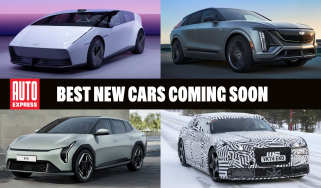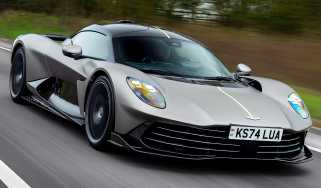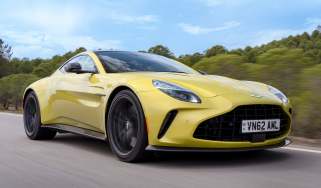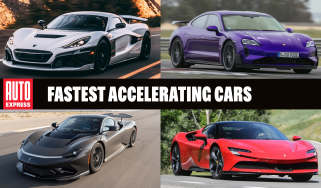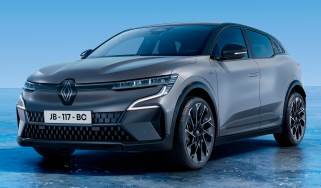Electric Aston Martin to get vibrating body to mimic V12 engine
Brit brand’s electric car plans have been pushed back, but boss has plans for an interesting USP
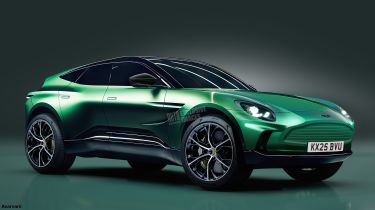
Aston Martin will launch its first electric car before the end of the decade, pushing back plans to focus on hybrids and electrified powertrains. Despite the delay, development is apparently ongoing, with CEO Adrian Hallmark suggesting the firm is working on making its first EV – expected to be a large, DBX-sized SUV – feel like a Le Mans race car.
A couple of years ago, Aston’s executive chairman Lawrence Stroll revealed the company was working on “building [its] own platform, our own chassis, it’s what [Aston does] very well”. At the time, he also confirmed that Aston was working with American EV firm Lucid to use its battery and motor technology, claiming it represented “the best existing, mature technology, with the highest horsepower, the lowest battery height to enable [Aston’s] EV strategy”.
Work on the fruits of this deal, said to be worth £182 million at the point of inception, is ongoing, although setbacks and dwindling market demand mean Aston will push back the reveal of its first EV to 2026 at the earliest. Now, Hallmark, who was appointed in 2024 and took up the role of CEO in September, has told Auto Express that he’ll look to differentiate his zero-emission models with clever technology that “physically resonates” with the driver.
“I’ve driven lots of BEVs,” Hallmark told us. “But it’s the [Mercedes] EQS AMG that gave me hope,” he said. “The reason it gave me hope is, without fake gear changes or engine noises, it resonates. I don’t mean emotionally – I mean physically resonates.”
It’s a theme Hallmark wants to replicate with Aston’s first electric car: “If you mapped the telemetry of a V12 engine, even the Valkyrie race engine, measured the frequencies and then built those into the body structure of the vehicle – linked to the throttle position and torque load of the motors – and then suppressed it digitally by counter waves (the nasty high pitched cheap sounding electrical frequency noises), you would feel exactly like you’re in a Valkyrie Le Mans car,” he told us.
“So I believe, without fake noises through speakers, but by actually agitating body structures and other structures with the frequencies that you get from a combustion powertrain, you can create the emotional connection with the vehicle. And the acceleration, we all know, is limitless. So you can make emotional electric cars, and we’re just at the beginning of that.”
Aston Martin will have access to Lucid's tech, allowing the British supercar maker to use the firm’s electronic drive units that incorporate the motors, inverter and the transmission on its cars’ rear axles. These will feature bespoke calibration and software for Aston Martin products, with Lucid chief executive and chief technology officer Peter Rawlinson previously highlighting that these EDUs will be based on existing Lucid tech. Currently, the maximum output of the tri-motor Lucid Air Sapphire stands at “more than 1,200bhp”, meaning the all-wheel drive saloon can sprint from 0-60mph in a claimed 1.89 seconds, offering a top speed of more than 200mph.
However, Aston’s CTO Roberto Fedeli previously confirmed to Auto Express that the British brand’s future models will use four motors, with a twin-motor drive unit of Aston’s own design for the front axle. This will most likely be influenced by the mid-engined Valhalla plug-in hybrid which uses a similar front axle set-up.
“We are learning how to develop the front twin-motor axle for the next generation”, Fedeli said at the time. He added that “a characteristic we like very much about Lucid's components is the size. The size of the component is very well suited to our platform and the constraints that we have in order to create just one platform to support not just SUVs, but also sports cars”.
He continued: “We want to be able to create [EV] cars with a roof height of a little bit less than the Vantage.” Fedeli went on to point out that this will mean we see battery modules packaged differently than the current convention of sandwiching them in the floor, with multiple modules positioned around the car potentially possible.
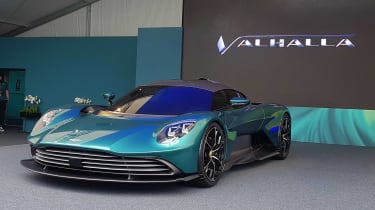
Rawlinson commented further on the power density of Lucid’s drive units – which fit inside a carry-on suitcase – saying that “Hyundai is at 1.1bhp per kg, a Tesla Model S Plaid is about 3.9bhp per kg, we’re at 9bhp per kg, so over twice as much. Our racing power unit looking towards the future is near to 17.”
Fedeli elaborated a little more on Aston’s possible future quad-motor set-up, highlighting a comparison between a digital test mule with four-motor torque vectoring and a DBX707, with the new car outscoring the current model for dynamic ability on track. “You see what can happen when you apply this kind of technology? Four-wheel torque vectoring – there is no need to correct the car,” he said. “What do you want in terms of power? 1,400bhp? 1,500bhp? It's not a problem.”
First electric Aston Martin to take SUV form
Asked if the comparison between Aston's first EV and the DBX707 was significant, if the 2025 car would take the form of an SUV, Fedeli nodded. As previewed by our exclusive image, it seems logical given the appetite in the market and the profit-making potential of these vehicles, and we'll soon see test mules on the road, according to Aston’s top technology exec.
At the time, Fedeli suggested we’d see the first EV prototypes running by the end of 2024. However, a somewhat stagnant EV market, mixed with a lack of retail incentives and confusion around ZEV targets, means that development has slowed. CEO Hallmark also told us that Aston Martin customers don’t follow market trends.
“There is a group of customers who are pro-EV,” he said. “[But] there's nothing better to trigger a billionaire than the word ‘no’. Most of our customers are multi-millionaires or billionaires. So if you tell them no, you can’t have a V12, no, you can’t have a V8 with 700 horsepower… they really want one.”
It’s for this reason that Hallmark and his team will add renewed focus on developing high-performance hybrid powertrains through to the end of the decade – alongside ongoing investment in the firm’s first EV.
“There are way more consumers that were anti-BEV, that are saying, well, I could live with a PHEV,” Hallmark told us. Apparently they’re saying: “If I can't have a full petrol car, that’s a great solution.”
Advanced aerodynamics
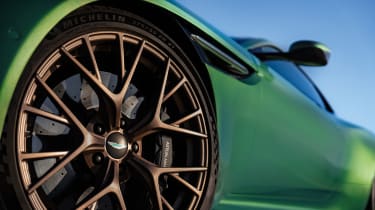
Fedeli hinted that weight and aerodynamics will be key to achieving the firm’s electric-car project’s goals, too. “Intensity. Driven. Emotion. That’s what will define it. Because we are building a BEV the weight could be a killer of the emotion and fun-to-drive – and not just the emotion, but the efficiency. The two pillars that are behind our concept of platform, concept of product, are emotion and efficiency.
“Aerodynamics is becoming the king. We have to manage the aerodynamics, and this could be done by using our partnership with the F1 team through simulation. We have some ideas about blowing the wake at the tailgate of the car in order to reduce the drag as much as possible. We are going to reduce the drag by 50 per cent, and this is what we need in order to avoid making the car heavy because of the energy we need on board for range.”
Expect Aston’s first EV to feature some funky aerodynamic solutions as a result, taking the energy from the aerodynamic flow at the front of the car and bringing it to the rear to “destroy the vortex”, according to Fedeli. “It means a huge reduction in drag,”he said.
Aston is also working on reducing the rolling resistance of its upcoming EV, with a clever brake-by-wire system from Brembo that controls the movement of the brake calipers’ pistons electronically, retracting them to reduce drag on the discs. A new P Zero tyre from Pirelli that features ‘Cyber Tyre tech that can sense loads on individual tyres is also under development.
Now read more about the best electric SUVs you can buy right now...
Find a car with the experts


